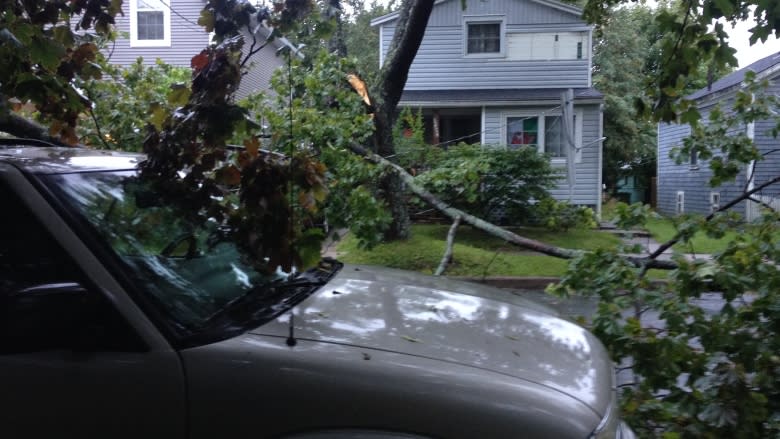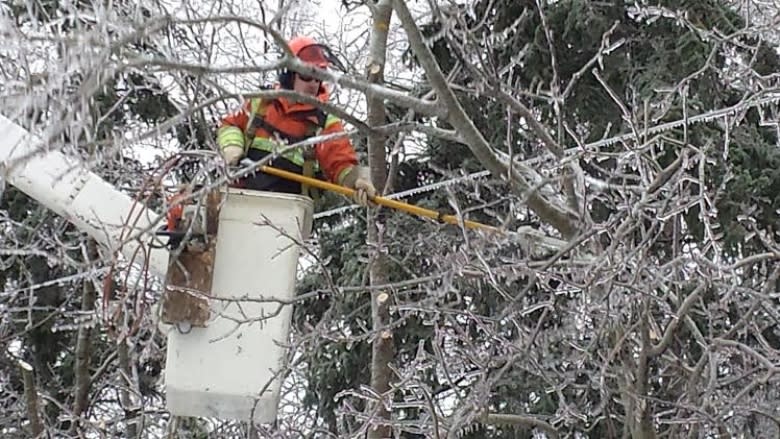2016 storm damage was costliest in a decade, says Nova Scotia Power
Nova Scotia Power was forced to pay out more than $22 million to cover the cost of damage from high winds last year — the most the utility has paid for storm repairs in 10 years.
Kathleen Burke, from the Cape Breton community of Little Lorraine, knows first-hand the impact of all that damage. A December storm knocked out power in her community and the 80-year-old woman spent 36 hours without electricity.
To keep warm, Burke stayed in the one room in her home with a fireplace. Bundled up in a blanket, she sat next to the fire for a day and a half, waiting for the electricity to be restored.
"It was awful hard. It seemed so, so long. Thirty-six hours to be without electricity was too, too long," she said.
"I have very good next-door neighbours they brought me over Thermos bottles full of tea and stuff like that, and some food because I couldn't cook anything here."
'More storms per year'
There were a total of 17 storms that damaged the province's power system in 2016, according to Matt Drover, director of regional operations with Nova Scotia Power. Most of that damage was done by high winds knocking trees or tree limbs onto power lines.
Drover said trees falling on power lines is the top cause of damage to the electrical system.
And even though last year didn't pack the wallop 2015 did in terms of snow and rain, it still cost Nova Scotia Power more than double in repairs because of the wind damage.
Though there are exceptions like a calm 2012, the trend is toward more problems, Drover said.
"What we've seen since Hurricane Juan back in 2003 is that we are definitely getting more storms per year, and some of those are a lot more impactful than what they used to be as well," he said.
If the amount of storm damage continues to increase, Drover said repair costs will eventually be passed onto ratepayers.
$400M capital program
In an attempt to prevent damage and keep repair costs down, the utility spends about $18 million a year to trim trees around power lines. It is always more costly to repair damage than to work to prevent it, Drover said.
"We have a $400 million capital program this year a big focus of that is on replacing equipment at the end of its life so that we do have a better, more robust system when we do have storm events," said Drover.
Nova Scotia's consumer advocate is skeptical. John Merrick said there are questions about how well that money is being spent and if it's enough to protect the power system.
"Whether they are providing an adequate amount of storm hardening, whether they're spending an adequate amount to truly be ahead of the storms would require an analysis of exactly what they are spending now and what the condition of their lines are," he said.
Rate jump unlikely, says Merrick
Brian Gifford, chair of the advocate group Affordable Energy Coalition, said that the cost of storm damage is low compared to the amount of money the utility pays out to cover its fuel costs, but that the damage could put some small additional pressure on Nova Scotia Power to increase its rates.
If there was an increase in power rates due to storm damage it would most likely come into effect over a long period of time, according to Merrick. He doubts ratepayers would see a big jump in their electrical rates in one year.
At the same time, Merrick said people need to understand that there is no way to completely protect the electrical grid from bad weather and everyone will have to chip in to keep it up and running.










